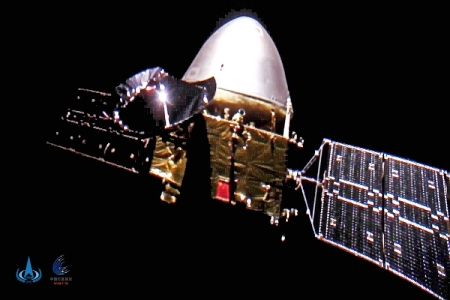A typical mid-latitude Martian crater with glacial features
Cool image time! The crater on the right, the image cropped and reduced to post here, is a great example of many craters scientists have found in the mid-latitudes on Mars containing a variety of features that suggest buried glaciers. In this case we are looking at what they have dubbed a concentric crater fill, material that resembles glacial material that fills the crater’s interior and floor, and appears often to erode in a series of rings. You can see another example here.
The photo was taken on June 29, 2020 by the high resolution camera on Mars Reconnaissance Orbiter (MRO). The crater itself is located in a region of chaos terrain dubbed Nilosyrtis Mensae, located in the transition zone between the cratered southern highlands and the lowland northern plains.
Nilosyrtis Mensae is part of a region of Mars I call glacier country. When you include the mensae regions Protonilus and Deuteronilus to the west, this transition zone of random mesas, knobs, and criss-crossing canyons stretches about 2,000 miles. The context map below focuses in on Nilosyrtis Mensae, where this crater is located.
» Read more
Cool image time! The crater on the right, the image cropped and reduced to post here, is a great example of many craters scientists have found in the mid-latitudes on Mars containing a variety of features that suggest buried glaciers. In this case we are looking at what they have dubbed a concentric crater fill, material that resembles glacial material that fills the crater’s interior and floor, and appears often to erode in a series of rings. You can see another example here.
The photo was taken on June 29, 2020 by the high resolution camera on Mars Reconnaissance Orbiter (MRO). The crater itself is located in a region of chaos terrain dubbed Nilosyrtis Mensae, located in the transition zone between the cratered southern highlands and the lowland northern plains.
Nilosyrtis Mensae is part of a region of Mars I call glacier country. When you include the mensae regions Protonilus and Deuteronilus to the west, this transition zone of random mesas, knobs, and criss-crossing canyons stretches about 2,000 miles. The context map below focuses in on Nilosyrtis Mensae, where this crater is located.
» Read more








